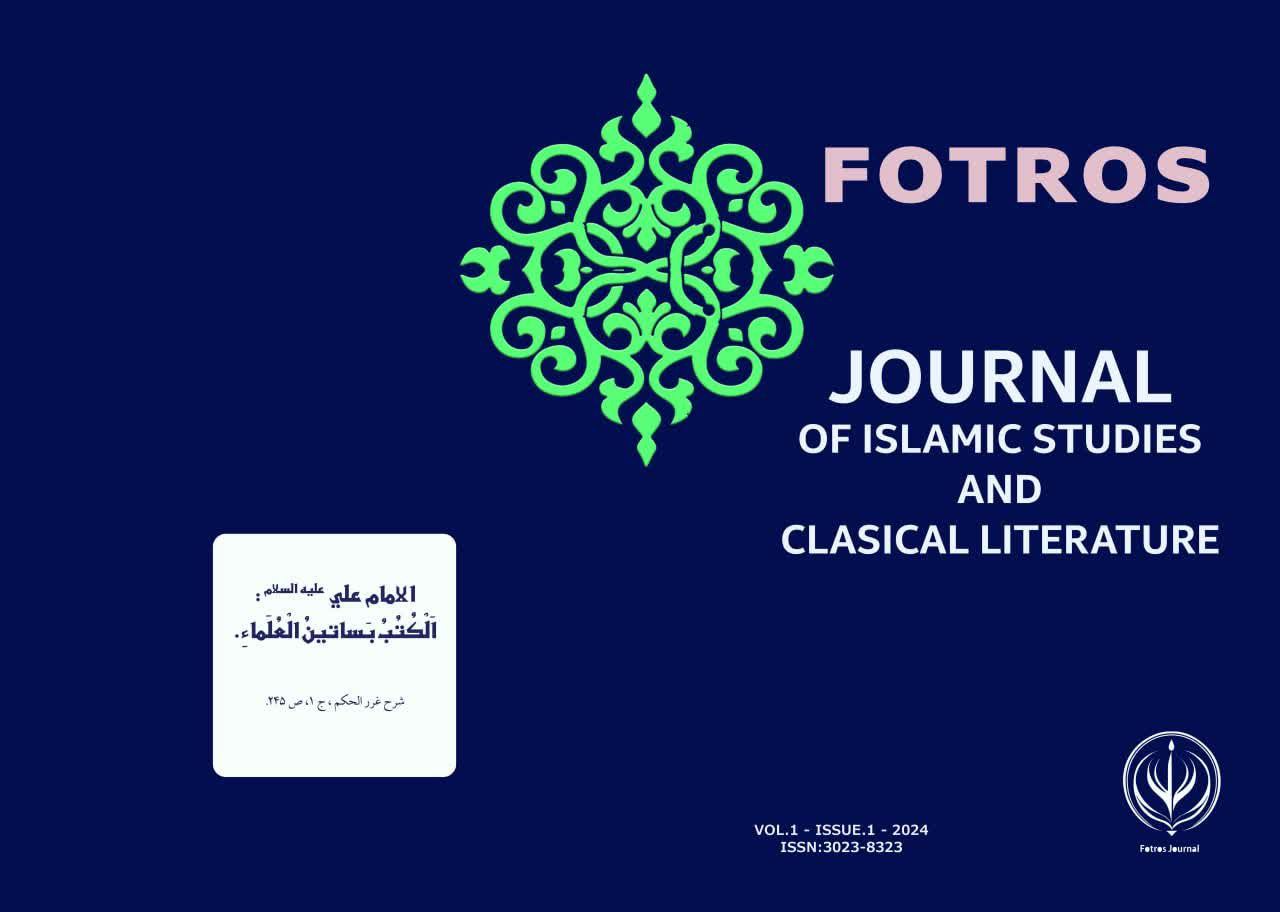Sosyal Medyanın Klasik Edebiyat Eğitimi Üzerindeki Etkisi
DOI:
https://doi.org/10.5281/zenodo.12545006Anahtar Kelimeler:
social media, classical literature education, digital tools, literary discourse, critical thinking, digital archives, immersive learning, digital citizenship, educational policy, professional development, global collaborationÖzet
Sosyal medyanın klasik edebiyat eğitimine entegrasyonu, öğretim ve öğrenme dinamiklerini önemli ölçüde etkileyen dönüştürücü bir yaklaşım olarak ortaya çıkmıştır. Bu makale, sosyal medya platformlarının edebi tartışmalar için yeni ortamlar olarak nasıl hizmet ettiğini, öğrencilerin geleneksel sınıf sınırlarının ötesinde etkileşimde bulunmalarını, tartışmalarını ve işbirliği yapmalarını sağladığını araştırıyor. Dijital araçların kullanımıyla öğrenciler, küresel olarak akranları ve uzmanlarla bağlantı kurabilir, klasik metinlerin anlaşılması ve yorumlanmasını zenginleştirebilirler. Sosyal medya, sürekli etkileşim, akran geri bildirimi ve çeşitli bakış açılarına maruz kalmayı kolaylaştırarak eleştirel düşünme ve analitik becerileri geliştirir.
Ayrıca, sosyal medya platformları, öğrencilerin tarihsel bağlamları ve edebi önemi daha derinlemesine anlamalarını ve takdir etmelerini sağlayan geniş dijital arşivlere ve akademik kaynaklara anında erişim sunar. Klasik edebiyat öğretiminde sanal gerçeklik ve dijital simülasyonların kullanımı, antik metinler ile çağdaş öğrenciler arasındaki boşluğu kapatan sürükleyici bir öğrenme deneyimi sunar. Ancak, sosyal medyanın yaygın kullanımı, dikkat dağınıklığı ve kişisel ile akademik yaşam arasındaki çizgilerin bulanıklaşması gibi zorluklar da ortaya çıkarır; bu da bu sorunları hafifletmek için net yönergeler ve eğitim politikaları gerektirir.
Makale, sosyal medyanın hem pedagojik bir araç hem de öğrenciler arasında dijital vatandaşlığı teşvik eden bir platform olarak ikili rolünü vurgulamaktadır. Eğitimciler, sorumlu çevrimiçi davranış ve dijital okuryazarlığı savunarak öğrencileri gelecekteki dijital dünyaya hazırlayabilir. Eğitimciler için sürekli mesleki gelişim ve ebeveynler ve daha geniş topluluk ile işbirlikçi bir yaklaşım, sosyal medyanın klasik edebiyat eğitimine başarılı bir şekilde entegrasyonu için hayati öneme sahiptir. Sonuç olarak, sosyal medya, edebi eğitimi geliştirir ve öğrencilere dijital çağ için gerekli becerileri kazandırır.
Referanslar
Basheti, I., Mhaidat, Q. N. & Mhaidat, H. N., (2021), Prevalence of anxiety and depression during COVID-19 pandemic among healthcare students in Jordan and its effect on their learning process: A national survey.
Bias, C., (2011), The Cochrane Collaboration's tool for assessing risk of bias in randomised trials.
Black, P. & Wiliam, D., (2010), Inside the Black Box: Raising Standards through Classroom Assessment.
Davaanyam, G., (2022), Current Status of Korean Classical Literature Education in Mongolian Universities and Improvement Plan.
Gao, J., Zheng, P., Jia, Y., Chen, H., Mao, Y., Chen, S., Wang, Y., Fu, H. & Dai, J., (2020), Mental health problems and social media exposure during COVID-19 outbreak.
Guo, Y., Yang, L. & Chen, Y., (2022). Bike Share Usage and the Built Environment: A Review.
Kaplan, A. & Haenlein, M., (2010), Users of the world, unite! The challenges and opportunities of Social Media.
Lakina, S., (2022), FREQUENCY ANALYSIS OF TOPONYMS IN TEXTBOOKS ON THE ACADEMIC DISCIPLINE "CLASSICAL LITERATURE".
Ludlow, M., (2015), Reading Classic Texts.
Rama, ., Nayak, C. & Agarwal, R. K., (2011), A MODEL OF CREATIVITY AND INNOVATION IN ORGANISATIONS.
Tsatsou, P., (2019), Digital inclusion of people with disabilities: a qualitative study of intra-disability diversity in the digital realm.
Xia, X., May, B., Zhang, A., Guo, X., Lu, C., Xue, C. & Huang, Q., (2020), Chinese Herbal Medicines for Rheumatoid Arthritis: Text-Mining the Classical Literature for Potentially Effective Natural Products.
İndir
Yayınlanmış
Nasıl Atıf Yapılır
Lisans
Telif Hakkı (c) 2024 Shayan Hashemi

Bu çalışma Creative Commons Attribution 4.0 International License ile lisanslanmıştır.
"FOTROS Dergisi Lisans Şartları
Bir makaleyi FOTROS Dergisi'ne gönderirken, yazarlardan aşağıdaki lisans şartlarını kabul etmeleri istenir:
Creative Commons Atıf 4.0 Uluslararası (CC BY 4.0) Lisansı FOTROS Dergisi'nde yayımlanan tüm makaleler, Creative Commons Atıf 4.0 Uluslararası (CC BY 4.0) lisansı altında lisanslanmıştır. Bu lisans, diğerlerine şunları yapma izni verir:
Paylaş — Materyali herhangi bir ortamda veya formatta kopyalama ve yeniden dağıtma.
Uyarlamak — Materyali herhangi bir amaç için, hatta ticari amaçlarla bile, yeniden düzenleme, dönüştürme ve inşa etme.
Aşağıdaki şartlar altında:
Atıf — Uygun kredi vermek, lisans bağlantısı sağlamak ve değişiklik yapıldıysa bunu belirtmek zorundasınız. Bunları herhangi bir makul şekilde yapabilirsiniz, ancak lisans sahibinin sizi veya kullanımınızı onayladığını ima edecek şekilde değil.
Ek kısıtlamalar yok — Diğerlerinin lisansın izin verdiği herhangi bir şeyi yapmasını yasal olarak kısıtlayan yasal terimler veya teknolojik önlemler uygulayamazsınız.
Yazar Hakları Yazarlar aşağıdaki hakları saklar:
Telif Hakkı — Yazarlar eserlerinin telif hakkını elinde bulundurur.
Yeniden Kullanım — Yazarlar, çalışmalarını FOTROS Dergisi'nde orijinal yayına uygun şekilde teliflenmiş CC BY 4.0 lisansı veya seçtikleri herhangi bir lisans altında mevcut hale getirebilirler.
Dağıtım — Yazarlar, çalışmalarını çevrimiçi olarak (örneğin, kurumsal havuzlarda veya web sitelerinde) gönderim sürecinden önce ve sırasında dağıtabilirler, çünkü bu, ürün verimli alışverişlere ve yayınlanan çalışmaların daha erken ve daha fazla alıntılanmasına yol açabilir.
Garanti ve Tazminat Yazarlar garanti eder ki:
Çalışma orijinaldir ve kendileri tarafından yazılmıştır.
Lisansı vermek için gerekli haklara sahiptirler.
Çalışma üçüncü taraf haklarını ihlal etmez.
Yazarlar, bu garantiyi ihlalden kaynaklanan herhangi bir iddiadan FOTROS Dergisi'ni tazmin etmeyi ve zararsız tutmayı kabul eder."


